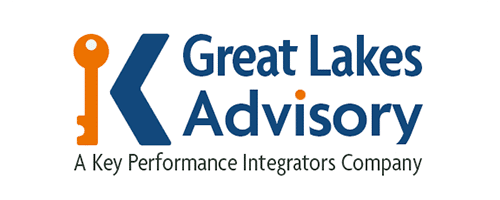Every organization eventually faces a time when change is essential or even necessary, whether it be market shifts or just the opportunity to benefit from new technology. At these times, organizations can choose from reengineering and continuous improvement. You might choose to utilize business process optimization consulting.
What Is Business Process Reengineering (BPR)?
What is BPR? The acronym is the shortened version of business process reengineering. What does it actually mean in definition, though? It’s a strategy whose inspiration is based on ambition, where you decide to redesign a business process from step one.
Business process reengineering is about taking a current system and replacing it entirely. Ideally, you’ll do so in ways that take customer value propositions into account. Focus on what the ideal inputs and outputs would be so you can deliver what customers want in highly efficient ways.
BRP involves dialing things all the way back to the actual drawing board that starts any process at a theoretical level. Specific actions you might take include:
- Eliminating Certain Activities: Get rid of anything that’s ineffective, unproductive, or just redundant.
- Reorganize Your Teams: Upsize, downside, or restructure teams. Mix up the responsibilities of the various teams.
- Minimize Work Fragmentation: Find areas where inter-departmental transparency can be bolstered.
One effective way to learn about this is by using the complete guide with the steps and examples we offer.
Benefits of Business Process Reengineering
What are the advantages of BPR? It turns out there are quite a few you can take advantage of:
- Lower Risks: Since reengineering totally replaces current systems, you have the chance to reduce existing risk factors by cutting them off from the start. Know what your needs are, and find ways to get them met without getting sidetracked.
- Cost-Effectiveness: When you get rid of the current system, you’re also getting rid of its costs. They might be significant, especially if they are from older ways of doing things that might not have been as efficient, and especially if they got incrementally bloated over the course of time.
- Exposure of the Existing Business Rules: Your existing business rules might need to change. In fact, they might have changed already. Reengineering is a chance to highlight older business rules that solve problems that don’t exist anymore or were just exceptional situations you don’t need to deal with on a regular basis.
- Incremental Development: Developing things incrementally means you can move everyone involved in a new direction but at the pace that they can handle. New systems and changes are more likely to take root if they’re implemented step by step over time so everyone can form new habits and routines.
- Quality Improvements: Use your new systems to turn things holding you back into actual competitive advantages.
BPR in a Crisis
When deciding to use BPR vs BPI, it helps to know what BPR can do in a crisis. BPR is certainly something many companies are already using to make the global supply chain stronger after the lessons learned during the pandemic. Help your organization turn over a new leaf by harnessing the potential of AI, and embrace other currently emerging technologies to keep your business running smoothly in the face of disruptions and uncertainty.
Need professional help or guidance? We have business optimization experts ready to work with you!
What Is Continuous Business Process Improvement?
If you want to effectively choose business process reengineering vs continuous improvement, then you should know what both do. Continuous business process improvement might also be known as continual improvement. It’s an incremental approach instead of shaking everything up at all levels. Also known as BPI, this is how you improve things by starting where you are instead of rebuilding everything from scratch.
NASA demonstrated this famously during the Apollo Program, as they went step by step in the process of getting men on the moon and also safely back. Apollo 10 didn’t land on the moon but got astronauts within 8 miles of the lunar surface. Many Americans didn’t understand that this was a necessary incremental step that set things up for subsequent missions that did land.
Advantages of Continuous Business Process Improvement
When choosing BPI vs BPR, it helps to know the benefits of BPI. They include the following:
- Workflow: Breaking things down incrementally means you can identify specific parts of a workflow that can be improved one at a time. Specific actions are easier to identify and implement on a case-by-case basis.
- Problems Solving Technique: Another benefit of breaking things down incrementally also means being able to identify specific problems and deal with them individually. Analysis can precede deliberations, decisions, and then finally action.
- Reduced Root Causes: As you identify specific problems and deal with them one by one, you’ll reduce the number of root causes of problems for your business. Efficiency will rise gradually over time, albeit perhaps sporadically. Customer satisfaction will also go up at the same time.
- Improved Streamline: Incremental improvements and reduction of problems will inevitably streamline your organization’s internal structure and operations. Things will flow much more smoothly and give you more maneuvering room to respond to things.
- Affordability: As things get more streamlined and efficient, they’ll also become more cost-effective. This should increase your profit margin. Hopefully, it even gives you a competitive advantage over your sector peers you’re hoping to pull ahead of.
Continuous Improvement Process in a Crisis
When your business is in a time of crisis, that will inevitably impact how your professionals think and even act. Powerful emotions arise, and they influence how people see things. Unfortunately, many of these feelings might be denial, helplessness, and fear. Fatalistic attitudes happen because people might think the circumstances are too demanding to actually deal with and things are futile. The continuous improvement process is a different path and one that can lead to actually achieving a degree of security in otherwise uncertain circumstances.
Do you want help from industry experts with this? Schedule that right now!
Business Process Reengineering vs. Continuous Improvement
Knowing the differences between business process reengineering and continuous improvement helps you make the decision about which way to go. That’s often decided by certain points more so than others. Many of the differences are noticeable in the areas of managerial involvement, team involvement, specific improvement goals, and the implementation approach.
The biggest difference might be that BPI improves on what’s already in place while BPR results in dramatically different ways of doing things. The rates of change are obviously quite different.
The scope of organizational change you are after might determine which process is better. The extent of your focus also matters greatly. Are you looking to change things on a very limited basis? Or do you want to instill sweeping change across the organization?
The information systems that you use can guide you to which one is better, although those same systems might also be the things that you want to change. Are you seeking to address specific problems? Or are you after certain goals that you’re not making enough progress on so far?
| Business Process Improvement | Business Process Reengineering |
|---|---|
| Always Changing and Improving | Build Systems from Ground Up |
| Emphasize on Actual Process | Instill a Larger Strategy |
| Process Has Mapping and Documentation | As-Is Process Needs Fresh Look |
| Good for Smaller Companies | It May be Better For Larger Organizations |
How Do You Choose the Right One for Your Organization?
Knowing the difference between BPR and BPI should help you choose, but which one is right for your establishment?
Opt for BPI if your...
- The as-is process already has mapping and documentation.
- The as-is process works well fundamentally but could use some improvement.
- Your emphasis is on the actual process and not instilling a larger corporate strategy.
Opt for BPR when...
- Your as-is process has proven redundant and needs fresh thinking.
- Your as-is process doesn't work anymore and requires massive retooling.
- Your company is focused on a broader strategy than optimizing specific tasks.
Schedule an appointment with our business process optimization consultants.
What's Your Primary Objective?
Incremental steps might be the way to go if you have a big accomplishment you hope to achieve in the future, but BPR is a good way to go if you can reach your goals by building on what's already in place.
How Large Is Your Company?
BPI is usually an automatic move for a smaller organization or start-up, but large corporations might have enough resources to put hundreds of professionals through a BPR initiative if it's worth it.
How Many of Your Professionals Will Be Impacted by This Change?
Old habits and ways of doing things are the kind of things people will cling to. Getting buy-in can be hard, especially when you involve more people.
Conclusion
Every organization has to face change sooner or later. Fortunately, you can decide how you handle change. Knowing the difference between business process reengineering and continuous improvement means you can choose how your establishment responds to a new reality. It might be a responsibility you don't see coming or want to deal with, but it's also an opportunity to plot your company's future. If you want to get help or guidance with any of this from business optimization specialists, then contact us right away.


